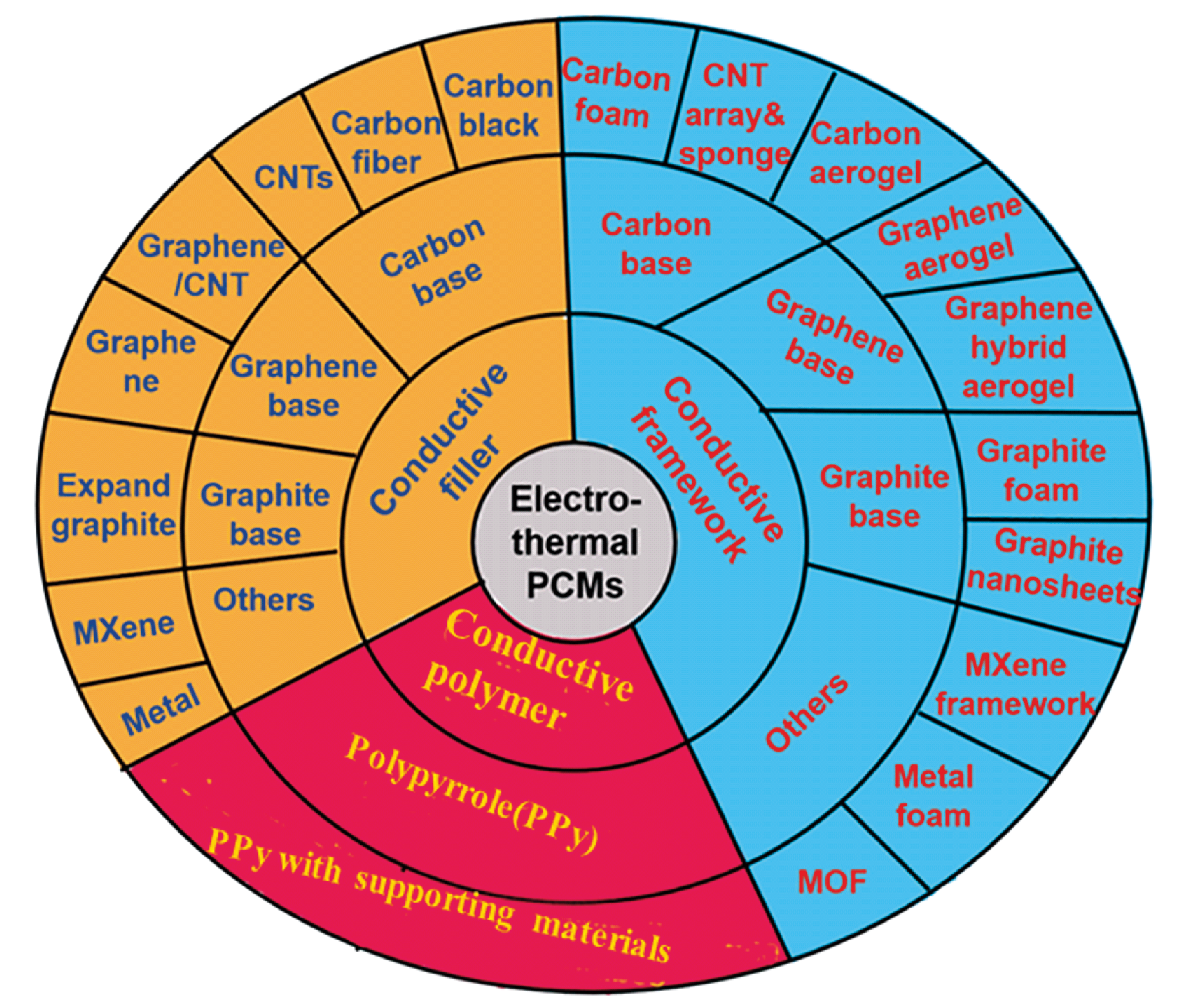 PDF(11183 KB)
PDF(11183 KB)


Conductive Phase Change Materials (PCMs) for Electro-to-Thermal Energy Conversion, Storage and Utilization
Jiang Haoyang, Xiong Feng, Qin Mulin, Gao Song, He Liuruyi, Zou Ruqiang
Prog Chem ›› 2023, Vol. 35 ›› Issue (3) : 360-374.
 PDF(11183 KB)
PDF(11183 KB)
 PDF(11183 KB)
PDF(11183 KB)
Conductive Phase Change Materials (PCMs) for Electro-to-Thermal Energy Conversion, Storage and Utilization
As the largest supply end and demand end in daily production respectively, the conversion, storage and utilization of electric energy and thermal energy play an important role in energy systems. Therefore, it is of great significance to develop high-efficiency materials for electro-thermal conversion and storage, especially facing today’s energy crises, environmental pollution and extreme climates. Among heat storage materials, phase change materials (PCMs) own unique advantages because of their high latent heat storage density and constant temperature during heat absorption and release. However, the low intrinsic conductivity of most PCMs does not match the large power requirements of current energy storage systems. This issue can be effectively improved by combining PCMs with conductive materials to obtain electrically heatable PCM composites. In this article, the latest research progress of electro-thermal conversion PCMs from three aspects of the functional mechanism, affecting factors and applications are systematically reviewed. Moreover, PCMs composited with conductive fillers, conductive framework and serving as conductive polymers are summarized and compared critically. Finally, this article points out the potential direction of future research and emphasizes the key points of this field.

phase change materials / conductive material / package / oriented structure / electrothermal conversion efficiency
| [1] |
|
| [2] |
|
| [3] |
|
| [4] |
|
| [5] |
|
| [6] |
|
| [7] |
|
| [8] |
|
| [9] |
|
| [10] |
|
| [11] |
|
| [12] |
|
| [13] |
|
| [14] |
|
| [15] |
|
| [16] |
|
| [17] |
|
| [18] |
|
| [19] |
|
| [20] |
|
| [21] |
|
| [22] |
|
| [23] |
|
| [24] |
|
| [25] |
|
| [26] |
|
| [27] |
|
| [28] |
|
| [29] |
|
| [30] |
|
| [31] |
|
| [32] |
|
| [33] |
|
| [34] |
Nat. Nanotechnol. 2010, 5: 755.
|
| [35] |
|
| [36] |
|
| [37] |
|
| [38] |
|
| [39] |
|
| [40] |
|
| [41] |
|
| [42] |
|
| [43] |
|
| [44] |
|
| [45] |
|
| [46] |
|
| [47] |
|
| [48] |
|
| [49] |
|
| [50] |
|
| [51] |
|
| [52] |
|
| [53] |
|
| [54] |
|
| [55] |
|
| [56] |
|
| [57] |
|
| [58] |
|
| [59] |
|
| [60] |
|
| [61] |
|
| [62] |
|
| [63] |
|
| [64] |
|
| [65] |
|
| [66] |
|
| [67] |
|
| [68] |
|
| [69] |
|
| [70] |
|
| [71] |
|
| [72] |
|
| [73] |
|
| [74] |
|
| [75] |
|
| [76] |
|
| [77] |
|
| [78] |
|
| [79] |
|
| [80] |
|
/
| 〈 |
|
〉 |